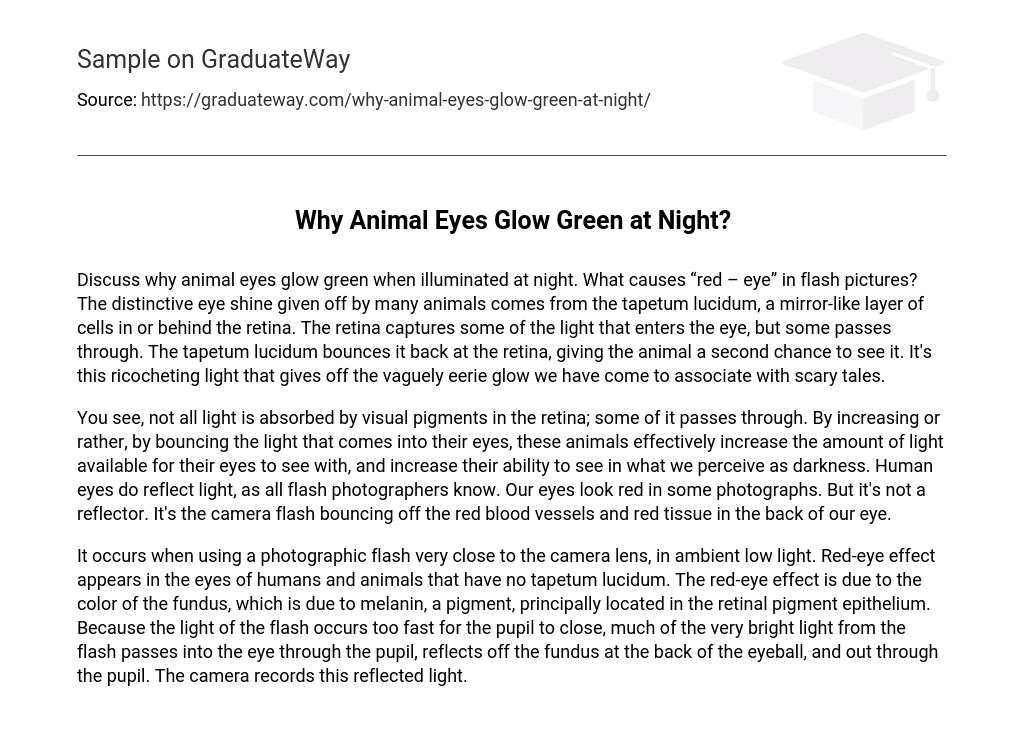Discuss why animal eyes glow green when illuminated at night. What causes “red – eye” in flash pictures? The distinctive eye shine given off by many animals comes from the tapetum lucidum, a mirror-like layer of cells in or behind the retina. The retina captures some of the light that enters the eye, but some passes through. The tapetum lucidum bounces it back at the retina, giving the animal a second chance to see it. It’s this ricocheting light that gives off the vaguely eerie glow we have come to associate with scary tales.
You see, not all light is absorbed by visual pigments in the retina; some of it passes through. By increasing or rather, by bouncing the light that comes into their eyes, these animals effectively increase the amount of light available for their eyes to see with, and increase their ability to see in what we perceive as darkness. Human eyes do reflect light, as all flash photographers know. Our eyes look red in some photographs. But it’s not a reflector. It’s the camera flash bouncing off the red blood vessels and red tissue in the back of our eye.
It occurs when using a photographic flash very close to the camera lens, in ambient low light. Red-eye effect appears in the eyes of humans and animals that have no tapetum lucidum. The red-eye effect is due to the color of the fundus, which is due to melanin, a pigment, principally located in the retinal pigment epithelium. Because the light of the flash occurs too fast for the pupil to close, much of the very bright light from the flash passes into the eye through the pupil, reflects off the fundus at the back of the eyeball, and out through the pupil. The camera records this reflected light.





